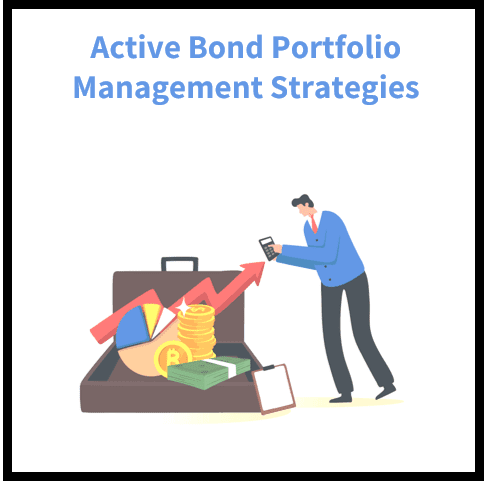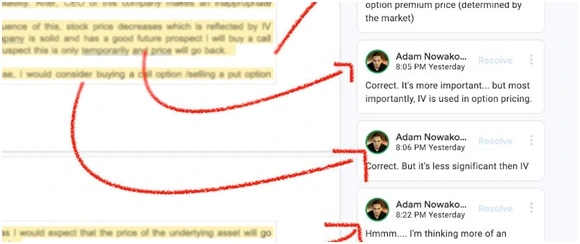Keeping your portfolio active with smart management strategies is critical to its success. While low-cost indexing is an excellent long-term strategy, actively managed funds can offer the potential for better risk-adjusted returns over the short term, especially in more volatile markets. If you’re an active investor looking for ways to optimize your portfolio, actively managed mutual funds are just what you need.
In this blog post, we’ll take a look at some of the benefits of active management, different active management strategies you can use in your own portfolio and specific assets that can help boost performance.
Why is Active Management Important for Investors?
Active management strategies are crucial for long-term investors looking for strategies to beat the market averages. Not all funds are created equal, and some actively managed funds are more effective than others.
While it’s important to remember that the performance of actively managed funds can go up and down over time, they can be a helpful part of your portfolio if managed well. In the long term, active management can outperform the market. Average an nualized returns of actively managed equity funds are around 7.72% over the past 10 years. While the S&P 500 has returned around 6.22% over the same period, the standard deviation of these active funds is about 4.63%, which is lower than the S&P 500’s 5.31%.
What does it take to be an effective active portfolio manager?
First, you need to understand what goes into successful active management. Successful active portfolio managers are disciplined, knowledgeable and understand the different asset classes they are investing in. Successful active managers also have a strong understanding of the macroeconomic environment, both globally and domestically. Active portfolio managers are disciplined.
They have a strategy they follow with a long-term view and stay true to that approach. Active managers are knowledgeable. They have a deep understanding of the asset classes they’re investing in, including their risk and return potential. Active managers have a strong understanding of the macroeconomic environment.
They know what’s happening globally, domestically and in financial markets. They understand how these factors could impact the success of their fund strategy.
Rebalancing Strategy: The Importance of Diversification
Perhaps the most common active management strategy is rebalancing your portfolio. When you first start investing, you should have a target asset allocation for your portfolio. That could be a mix of stocks and bonds, or a mix of stocks from different regions or even different industries.
Then you have the percentages of each asset in your portfolio. Over time, as the markets change, these proportions will change as well. A downturn in one asset class could cause it to become a bigger part of your portfolio. To keep your portfolio balanced and consistent with your original strategy, you may want to rebalance it.
A common way to rebalance is to look at your portfolio on a regular basis (most investors recommend doing this either quarterly or annually). If a particular asset class has become too large a part of your portfolio, you can sell enough to bring it back down to your desired percentage. You can also buy other assets whose proportion has grown too small.
Market Timing Strategy: When Is It Best to Be In or Out?
Another type of active management is market timing. Market timers try to predict when the market will rise or fall and then adjust their holdings based on their predictions. Some market timers may buy stocks for their portfolio if they think markets will rise or sell stocks if they think markets will fall. If you decide to employ a market timing strategy, you’ll want to be careful to do your research and employ sound market analysis. Market timing can be very difficult, and most investors don’t have the skill or the time to do it successfully. It’s important to remember that market timing is a very risky strategy.
When markets are falling, it’s best to be out of the stock market completely. However, when markets are rising, you’ll want to be in the stock market as much as possible. When you’re in the stock market, you can expect some periods of substantial volatility.
Tracking Error Arbitrage: Track Sector Performers
Another active management strategy is tracking error arbitrage. This strategy is helpful when you want to invest in a particular sector but it isn’t doing so well. To employ this active management strategy, you’ll want to first choose a sector that you want to invest in. You may want to invest in a particular sector because of the economic growth in that sector or because you have a strong opinion about that sector.
Next, you’ll want to track the sector’s overall performance. You may want to closely follow the S&P 500 sector’s overall performance. You can keep track of the sector’s performance by closely following the stocks in that sector. You can closely follow the stocks in that sector by closely following their daily performance. When the sector’s stocks are performing poorly, you can buy them.
Hedge Fund Strategies: A Safer Way to Utilize Leverage in your Portfolio
Hedge funds are another active management strategy. Like mutual funds, hedge funds are professionally managed and invest in a variety of assets. However, unlike mutual funds, hedge funds can employ more aggressive investment strategies, including taking on more debt.
Hedge funds are typically available only to high-net-worth individuals, but you can also invest in hedge fund strategies through mutual funds. These funds will typically attempt to replicate the returns of a particular hedge fund strategy. You’ll have to be careful, however, because not all funds are able to achieve the same level of risk and return of the hedge fund.
Know Your Risk Tolerance and Return Expectations
Before adding any new asset to your portfolio, it’s important to know your level of risk tolerance and your expectations for returns. You’ll want to consider the potential risk and volatility of any active management strategy you decide to employ in your portfolio. With every active management strategy, there will be periods of time when performance is poor.
During those times, it’s important to know that it’s a normal part of the market cycle and that it may not be a reflection of your fund manager’s skill. It’s important not to panic during these times. You’ll want to stay disciplined, stay the course and know that the returns will likely come back.
Use ETFs as a Core Holding Strategy
Many investors choose to use exchange-traded funds (ETFs) as a core holding strategy. ETFs are funds that have low fees and can track indexes or employ active management strategies. You can use ETFs to diversify your portfolio and employ active management strategies.
Some ETFs are actively managed and employ different strategies to try to outperform the broader market indexes. You can build a core holding strategy using ETFs and combine this with other active strategies like market timing. You can also use passive ETFs as an additional layer in your portfolio.
Investment Strategies That Benefit Portfolios
Beyond these specific strategies, there are also certain investment types that will benefit your portfolio. Some of these include:
– Diversification: While it may seem obvious, diversification is one of the most important elements of a successful portfolio. By including a variety of asset types, industries, and countries in your portfolio (including a small amount of commodities), you can reduce risk and protect against losses in any part of your portfolio.
– Asset Allocation: Once you have your portfolio diversified, you’ll need to determine how much of each asset type to include. This is referred to as your asset allocation. You’ll want to consider your age, risk tolerance, and current financial situation when determining your asset allocation.
– Low-cost funds: All funds, regardless of their type, can have a significant impact on your portfolio’s returns. In fact, research indicates that fund expense ratios can account for up to 90% of the difference between two funds with the same performance history.
These types of investments provide greater opportunities for alpha generation than index funds alone—and there are many active management strategies that will enhance your portfolio.






24 thoughts on “Active Bond Portfolio Management: Strategies and Assets to Benefit Your Portfolio”
[…] their portfolio by allocating their investments across different asset classes, such as stocks, bonds, real estate, and commodities. This diversification strategy helps to reduce the impact of any one […]
… [Trackback]
[…] Read More on that Topic: skillfine.com/active-bond-portfolio-management-strategies-and-assets/ […]
… [Trackback]
[…] Read More on that Topic: skillfine.com/active-bond-portfolio-management-strategies-and-assets/ […]
… [Trackback]
[…] Read More Information here on that Topic: skillfine.com/active-bond-portfolio-management-strategies-and-assets/ […]
… [Trackback]
[…] Read More to that Topic: skillfine.com/active-bond-portfolio-management-strategies-and-assets/ […]
… [Trackback]
[…] Read More Info here to that Topic: skillfine.com/active-bond-portfolio-management-strategies-and-assets/ […]
… [Trackback]
[…] Info on that Topic: skillfine.com/active-bond-portfolio-management-strategies-and-assets/ […]
… [Trackback]
[…] Here you can find 8029 more Info to that Topic: skillfine.com/active-bond-portfolio-management-strategies-and-assets/ […]
… [Trackback]
[…] Here you will find 90578 additional Info on that Topic: skillfine.com/active-bond-portfolio-management-strategies-and-assets/ […]
… [Trackback]
[…] Find More Information here to that Topic: skillfine.com/active-bond-portfolio-management-strategies-and-assets/ […]
… [Trackback]
[…] Information on that Topic: skillfine.com/active-bond-portfolio-management-strategies-and-assets/ […]
… [Trackback]
[…] Read More here on that Topic: skillfine.com/active-bond-portfolio-management-strategies-and-assets/ […]
… [Trackback]
[…] Read More to that Topic: skillfine.com/active-bond-portfolio-management-strategies-and-assets/ […]
… [Trackback]
[…] Find More Information here to that Topic: skillfine.com/active-bond-portfolio-management-strategies-and-assets/ […]
… [Trackback]
[…] Here you will find 50255 additional Info on that Topic: skillfine.com/active-bond-portfolio-management-strategies-and-assets/ […]
… [Trackback]
[…] Here you can find 77997 additional Info to that Topic: skillfine.com/active-bond-portfolio-management-strategies-and-assets/ […]
… [Trackback]
[…] Information on that Topic: skillfine.com/active-bond-portfolio-management-strategies-and-assets/ […]
… [Trackback]
[…] Info to that Topic: skillfine.com/active-bond-portfolio-management-strategies-and-assets/ […]
… [Trackback]
[…] Read More Information here to that Topic: skillfine.com/active-bond-portfolio-management-strategies-and-assets/ […]
… [Trackback]
[…] Read More to that Topic: skillfine.com/active-bond-portfolio-management-strategies-and-assets/ […]
Thank you for your sharing. I am worried that I lack creative ideas. It is your article that makes me full of hope. Thank you. But, I have a question, can you help me?
Thank you for your sharing. I am worried that I lack creative ideas. It is your article that makes me full of hope. Thank you. But, I have a question, can you help me?
very informative articles or reviews at this time.
For the reason that the admin of this site is working, no uncertainty very quickly it will be renowned, due to its quality contents.